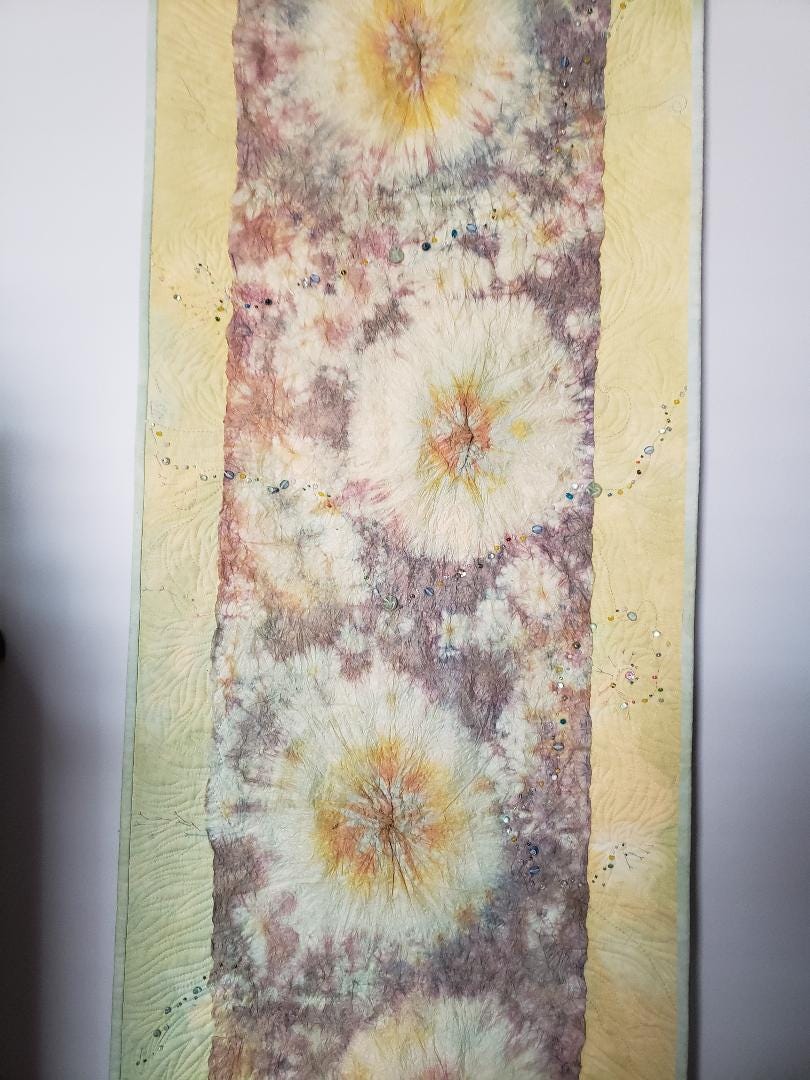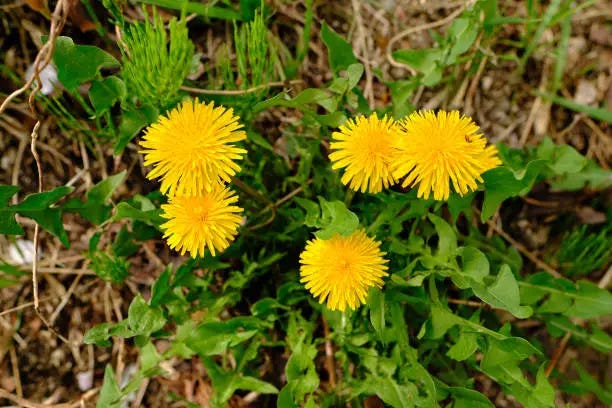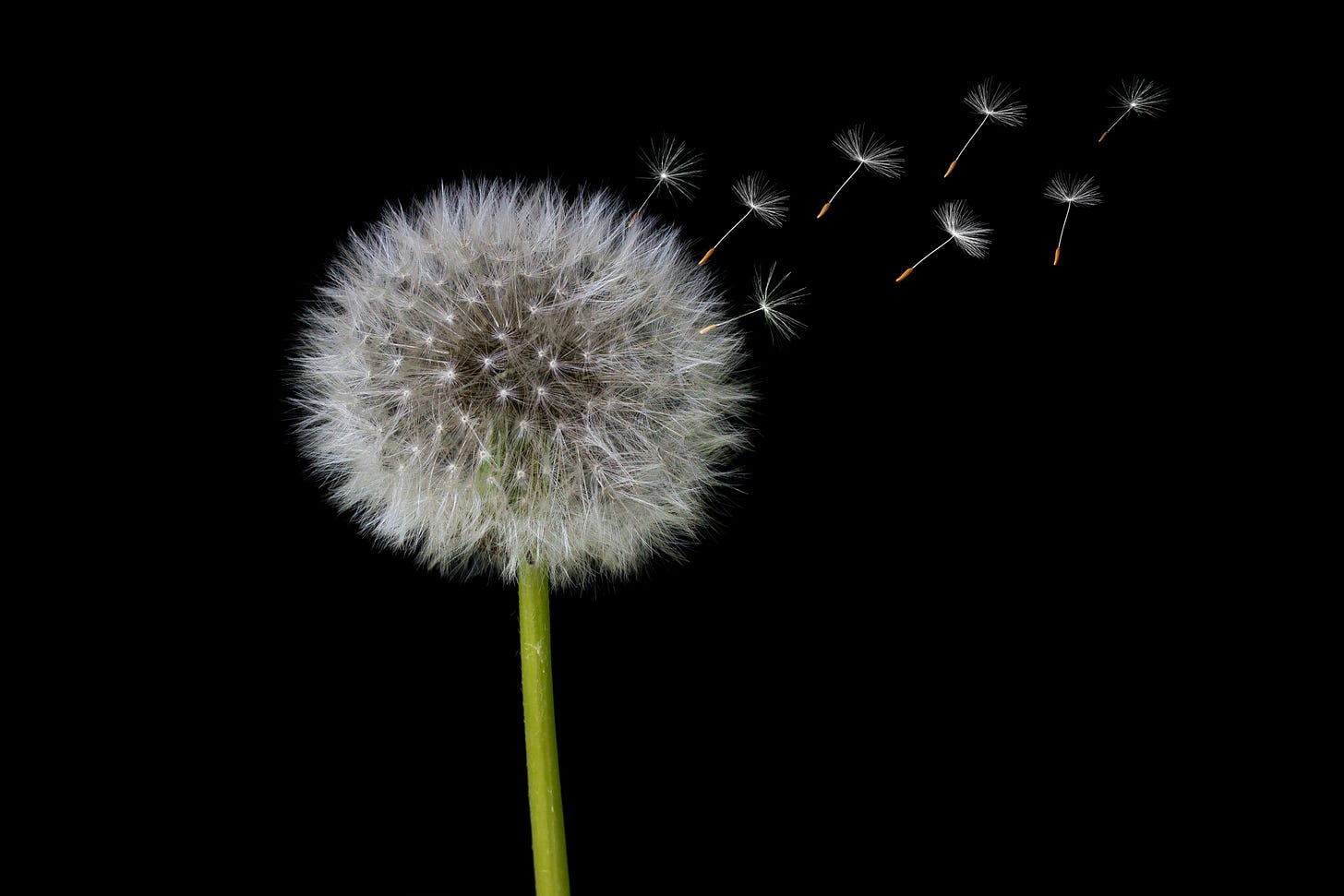Dandelions by any other name would taste just as delicious
Non-native, non-invasive dandelions have adapted and become naturalized. Yet, dandelions are under attack from folks who have been indoctrinated and drunk the lawn and garden industry cool aid.
Do You Get My Drift? Fabric and paper quilt by fibre artist Sandy Simmelink (2004) Photo: Doreen Nicoll
Dandelions, or as the French refer to them, “dents-de-lion” — lion’s teeth, referring to the deep cuts in their leaves — are either revered or reviled. Either way, they’re not a weed, but a flowering member of the daisy family (Asteraceae).
Native to Eurasia, dandelions were introduced to Turtle Island by European settlers somewhere in the mid-1600s and were valued as food and for their medicinal benefits. Introduced to so-called Canada by colonizers, dandelions are well entrenched in a variety of ecosystems and despite their proliferation of seeds, are not considered invasive.
Let’s start by looking at the function dandelions perform within the broader ecosystem. Their mere existence indicates that your soil has issues, but dandelions can mitigate these symptoms if given the chance.
Their deep tap root aerates compact soil allowing water and air to penetrate lawns – if that’s your ground cover of choice. Dandelions also pull nutrients like calcium from deep within the soil making those nutrients available to nearby plants as well as the wider ecosystem and even people who eat them. Eventually, dandelions act as a natural fertilizer when the plant “goes to sleep.” And, yes, dandelions are perennials, meaning established plants come back every year.
In early spring, dandelions are a source of nectar and pollen for pollinators when flowers are scarce — although many consider their offerings inferior. Dandelions are also a source of food for the rabbits and birds that live in my backyard as well as other wildlife traversing through on their foraging journeys.
For those backing onto ravines, dandelions reduce the risk of erosion while for the rest of us, they indicate soil that is compacted or lacking nutrients and they are willing and able to remedy that situation.
Dandelions Credit: Unsplash
If your neighbours are giving you grief over your dandelions it might be a good idea to remind them that the alternative is to take up your lawn and plant a season of potatoes or daikon radish to improve soil conditions and that you will eventually plant a mixture of grass and clover seeds. Or, do what’s trending in Hamilton, ON, completely replace that non-native Kentucky bluegrass with clover mix. Clover, native to Eurasia, puts nitrogen back into the soil, is non-invasive and combines long blooming periods with high nectar content making it a fabulous source of food for bees, butterflies and other pollinators.
Every part of a dandelion is edible and a good source of vitamins A, B, C, E, K and folate along with calcium, potassium, iron, and zinc. Dandelions are a good source of fiber and are a natural diuretic and liver cleanser with anti-inflammatory benefits. Additionally, dandelion milk is known to have laxative properties.
Over the centuries, this introduced, non-invasive plant has adapted and naturalized. Since the onset of the suburbs, however, dandelions have been under attack from folks who have been indoctrinated and drunk the cool aid offered by the profit driven, life killing regime that is today’s lawn and garden industry. These golf course perfect lawn converts think dandelions are something to be reviled, conquered and exterminated.
Effectively managing dandelions often means using some sort of manufactured poison in the form of selective and non-selective pesticides and herbicides. Selective herbicides containing 2,4-D – an ingredient found in the defoliant Agent Orange used in Vietnam -- or triclopyr whose specific uses are regulated under the Pest Control Products Act and is restricted in some municipalities, aren’t necessary. Selective herbicides like glyphosate that’s found in Roundup, kills a wide range of plants, including dandelions but also purposely planted plants.
In their article, Mexico’s planned glyphosate ban helped show how agroecology can lead the way forward, authors Erin Nelson, Laura Gómez Tovar and Manuel Angel Gomez Cruz stated, “In 2015, the World Health Organization declared glyphosate a “Probable Human Carcinogen.” This link to cancer was reinforced in January 2024 when a jury in the United States concluded Roundup caused non-Hodgkin’s lymphoma and ordered chemical company Bayer — which purchased Roundup producer Monsanto in 2018 — to pay US$2.5 billion in damages. Bayer has announced it intends to appeal the verdict.
Scientists have also raised concerns about the environmental harms of long-term glyphosate application. To name just a few, glyphosate threatens honey bee populations and has been found to kill birds, fish and soil microorganisms, all of which are crucial for ecosystem health.”
If you really must get rid of dandelions, pull them out by the root or douse them with boiling water or vinegar. Salt can also be used to dehydrate dandelions and kill their roots. However, when salt finds it way into storm sewers through run off it eventually makes its way into rivers, streams and lakes where it can increase salinisation impacting fish, wildlife and plants.
A dandelion gone to seed Credit: Herbert Goetsch/Unsplash
Instead of attacking dandelions, why not embrace their soil and health benefits. Simply deadhead the flowers before they go to seed leaving the rest of the plant to work its soil magic. If dandelions have infiltrated your grass, mowing them will help the rest of the plant blend in.
How about, picking those pesticide and herbicide free leaves to use in a salad, as a steamed or sauteed alternative to spinach, or in a soup? Dandelion leaves make delicious pesto and add flavour to quiches and frittatas.
Dandelion flowers make great fritters. Just be sure to take time to prepare the flowers by submerging them in a bowl of room-temperature water with about 1 tablespoon salt added to kill any insects. After ten-minutes, remove the flowers and rinse them under cold running water. Use a salad spinner to dry the flowers so the batter sticks.
I lived in High Park for about five years in the 1980s. It was a wonderful neighbourhood and home to a variety of cultures with fabulous food and coffee shops within walking distance or a short subway ride away in Bloor West Village.
The Italian green grocer near my home brought in huge bunches of dandelion leaves from his garden to sell in the shop. That’s when I learned about dandelion salad. When I moved to Burlington, my Lebanese neighbour introduced me to sautéed dandelion greens topped with lemon tahini sauce. Then, as a member of Burlington’s Sustainable Development Committee, I was asked to create a recipe for weed salad to serve wrapped in lettuce and cabbage leaves at the annual July 1st waterfront celebration in 2004. Dandelion, purslane, plantain, lamb’s quarters, sorrel and microgreens created the salad base that was topped with a garlic balsamic dressing. Even the faint of heart and kids loved the flavours and textures and many came back for seconds!
It’s time to rethink the role of lawns and front gardens during this epoch marked by human activity that has undeniably accelerated the climate crisis and environmental devastation. Why not be the change you want to see by establishing a new standard that embraces the ecological benefits of edible, non-invasive plants like dandelions.
And, maybe offer that neighbour who is having a conniption fit over a few yellow flowers in your lawn a cup of chamomile tea and some dandelion cookies to calm their frazzled nerves.
* Be sure to tune in Thursday for my interview with author, editor and musician Allister Thompson. Allister and I discuss his cli-fi novel, Birch and Jay, with important messages of hope and caring for a post-apocalyptic Mother Earth.
Thanks to everyone who read today’s article. With your financial support, a little Nicoll can make a lot of change.






Doreen explaining the value of dandelions will reach more people to help them understand. When I was a kid living out in the country, my mother would gather dandelion leaves and lambs quarters as soon as possible in spring to sauté them . She knew that our winter diet of root vegetables needed the vitamins & nutrients that the greens provided!
Doreen, I have a yard full of brilliant Dandelions so have transformed to keeping them in bloom especially during the no-mow-May period. Thanks for the article a great time to think about these and the bees!